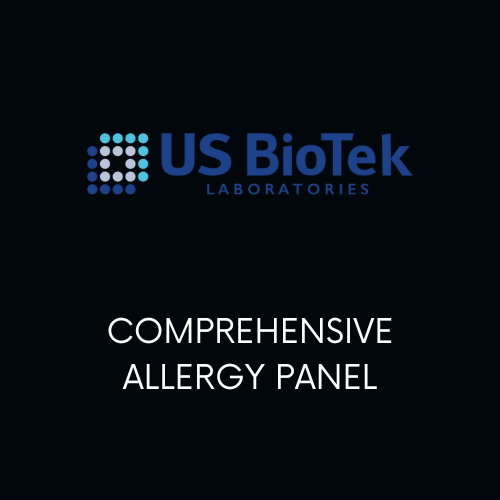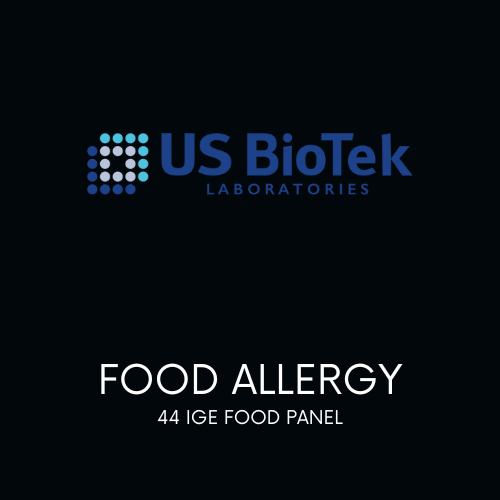WHAT IS AN ALLERGY?
IgE is a true allergy; when IgE is released, there is an immediate (seconds to hours) reaction. IgE reactivity can persist for years or a lifetime due to the presence of B-memory cells in the bone marrow, even if the food has been avoided. Food allergies are recognized to trigger adverse reactions such as skin conditions, GI problems, anaphylaxis, and more. With proper identification and elimination of the offending foods, many experience symptom relief, and reaction evasion.
140 Inhalant IgE Panel
The 140 Inhalant IgE Panel measures the levels of IgE antibodies to 140 common inhalant allergens. It uses both whole extracts and specific IgE components. Whole extracts are used because a patient can potentially be allergic to any component of the whole extract. Specific IgE components help predict the likelihood of anaphylaxis and minimize the risk of IgE reactions from cross-reacting foods.
158 Food IgE Panel
The 158 Foods IgE Panel provides an assessment of whole extract and specific IgE components. Whole extracts are used because a patient can potentially be allergic to any component of the whole extract. The inclusion of specific IgE components helps predict the likelihood of anaphylaxis and minimizes the risk of IgE reactions from cross-reacting foods.
295 Food & Inhalant IgE Panel
Since the structure and cross-reactivity of specific IgE (sIgE) components are known, the use of our 295 IgE Panel can help unravel cross-reactivity in complex, multi-sensitized patients. While there are multiple forms of treatment for IgE allergies, food avoidance and allergy immunotherapy (AIT) are front-line therapies that can be supported by the 295 IgE profile and its unique blend of whole extract allergens and specific IgE components.
Testing Process
Our IgE panels utilize a quantitative ELISA (enzyme linked immunosorbant assay) analysis of the specific immunoglobin IgE identified for the chosen diet panels’ food and spice analytes.
We follow a meticulous process to extract the critical component from each analyte (food and inhalant trigger) to ensure the antibody present in the patients’ sample will bind properly and validate results with positive and negative controls. Once attached to the antigens, antibodies are detected through spectrophotometric analysis, where the values are directly proportional to the concentration of the analytes in the sample. For additional accuracy, we perform duplicate testing to ensure there are no discrepancies.
Note
Test can be ordered standalone or included as part of a Food Sensitivity Panel.







